The stigma of depression is still actively present in today’s society due to a lack of understanding and fear of what it means to suffer from depression. However, depression is not an uncommon occurrence. It is one of the most common mental illnesses that affects more than 8% of American adults each year, which is an estimated 21 million US adults.
Fighting the stigma of depression starts by understanding what depression is, recognizing signs to search for in yourself or loved ones, and learning about the different types of depression. As individuals and members of a community, we also need to find ways to fight the stigma of depression. We will provide you with the information below with tools to help you get started.
What Is Depression?
The American Psychiatric Association (APA) defines depression as a common and serious mental illness that negatively affects how you feel, think, and act. Depression affects anyone despite their age, gender, sexual orientation, or cultural background. However, some factors contribute to depression, including biochemistry, genetics, personality, and environmental factors.
Biochemistry refers to the chemicals in the brain that contribute to depression symptoms. At times, depression is genetic, meaning that disclosing family history is important to disclose to a mental health care professional as it helps with a proper diagnosis. Some personality factors that may contribute to depression include low self-esteem and how individuals manage their stress. Environmental factors refer to outside forces an individual may experience, such as violence, neglect, or poverty.
As mentioned above, part of fighting the stigma of depression is also learning the signs or symptoms of depression. According to the APA, some symptoms include:
- Feeling sadness
- Lack of interest in things or activities a person used to enjoy
- Weight gain or weight loss (not due to a diet)
- Lack of sleep or sleeping for longer times than needed
- No energy and lack of motivation
- Problems concentrating at work, memory issues, or logical thinking
- Unable to perform normal day-to-day activities or self-care
- Feelings of worthlessness, hopelessness, and emptiness
- Thoughts about death or suicide
If you or a loved one are having thoughts about death, self-harm, or suicide, you can reach out to the Suicide and Crisis Line available 24/7 by dialing or texting 988.
For more information, read our “Recognizing Signs of Mental Illness in Loved Ones and What Steps to Take” for more information.
Types of Depression
Mental Health America describes the different types of depression that affect teens, women, and men. Each depression type has a different set of symptoms and treatment methods.
- Major depressive disorder (clinical depression): Major depression disorder happens when an individual feels depressed the majority of the time. Some symptoms include lack of energy, weight gain or weight loss, changes in sleep patterns, and suicidal thoughts.
- Persistent depressive disorder: It is when there is a longer-lasting form of depression going above the two-year mark, but they don’t reach the severity of the major depressive disorder symptoms.
- Bipolar disorder: At times, bipolar disorder can be characterized as a type of depression due to the manic highs and depressive lows an individual suffers.
- Seasonal affective disorder: Seasonal affective disorder is a mood disorder with symptoms of depression that occurs due to a lack of sunlight and short days, common in the fall and winter months.
- Psychotic depression: Psychotic depression occurs due to depression symptoms intermixing with psychotic symptoms, such as paranoia or hallucinations.
- Postpartum depression: Postpartum depression occurs in women after giving birth and experiencing major depression symptoms that can last from a few weeks or close to a year.
- Premenstrual dysphoric disorder: Premenstrual dysphoric disorder occurs when women experience depression symptoms the week before menstruation is due.
At the Alvarado Parkway Institute, we provide treatment for those struggling with symptoms of depression. Contact our trained call center staff who is ready to assist you at 619-333-7050 and is available 24/7, or complete our contact form.
Types of Stigma
The Merriam-Webster dictionary defines stigma as a “mark of shame” and a “set of negative and often unfair beliefs that a society or group of people have about something.” Stigma, prejudice, and discrimination have been present in our society against people who suffer from depression or any other type of mental mood disorder.
A study about the impact of mental illness stigma breaks down stigma into three groups: public stigma, self-stigma, and structural stigma explained below:
- Public stigma: “occurs when the general population endorses stereotypes and decides to discriminate against people labeled mentally ill.” Because it is a choice to discriminate against people suffering from depression, it leads those affected to not seek mental health treatment.
- Self-stigma: “occurs when a person with mental illness internalizes this corresponding prejudice.” By internalizing this negativity, individuals do not seek treatment or use negative language during depression treatment, such as “I need to take my crazy pills.” However, this type of self-stigma can sabotage treatment and the recovery process.
- Structural stigma: refers to the “policies of the private and governmental institutions that intentionally or unintentionally restrict opportunities of people with mental illness.” It leads to a lack of resource allocation when it comes to mental health treatments.
You can read more about the “Barriers to Mental Health Care Among Minorities” to learn more about the disparities in mental health service use and common barriers.
Studies have also shown how harmful the effects of mental health stigma can have on an individual who suffers from depression, which in return adds to their symptoms making it “worse than the condition itself.” According to the Mayo Clinic, some of the harmful effects of negative stigmas include:
- Unwillingness to seek mental health treatment.
- Lack of understanding by family, friends, and colleagues.
- Lack of opportunities at work or school due to stigma labels.
- Experiencing bullying, discrimination, or harassment.
- Issues with health insurance coverage.
- Disbelief that an individual will learn coping strategies or improve their mental health.
There are multiple ways our society can fight the stigma of depression. One of the most important factors is knowing someone or being in contact with someone who has lived or is living with mental illness. Research shows it helps with anti-stigma efforts so people can seek treatment. Along with the help of social marketing efforts (based on a California campaign study), it proved effective to increase awareness.
Ways of Fighting the Stigma of Depression
The National Alliance on Mental Illness (NAMI) offers a few ways of fighting the stigma of mental health that correlate with the fight against the stigma of depression. These include the following:
- Talking openly about depression as it will help to change the perspective of individuals.
- Educate yourself and others about the early depression warning signs and treatments available, or even get certified in mental health first aid.
- Be conscious of the language you use during a conversation, such as not saying, “It could be worse,” “Just deal with it,” or “You may have brought this on yourself.” See more at makeitok.org.
- Encourage equality between physical and mental illness treatments. There is no stigma for people who receive treatment for diabetes; it should be the same for those who receive treatment for depression.
- Show compassion for those who suffer from depression.
- Don’t harbor self-stigma.
There are some organizations and campaigns that focus on fighting the stigma and discrimination of those who suffer from mental health disorders. Some of these include the following:
- NoStigmas.org: The information on their website states, “We are a safe space for mental health advocates, survivors, loved ones, friends, and allies to gather and connect through honest conversations grounded in lived experiences.” Individuals can team up with the organization to participate in fundraisers, volunteer, become sponsors, and share their voices, or you can make a monetary donation for support.
- Thisismybrave.org: The organization’s mission is to “empower individuals to put their names and faces on their true stories of recovery from mental illness and addiction.” This important national survey showed how teenagers use social media to “find connection, support, and inspiration during times of depression, stress, or anxiety.” This organization has videos of real people sharing their stories and providing the opportunity for others to share their own.
- Makeitok.org: This organization additionally also shares people’s stories who suffer from mental illness and provides resources to take action, including a media toolkit, organizing virtual events and podcasts.
Don’t Fall for the Stigma of Depression and Seek Treatment
There are resources and treatment options for depression which can vary based on a person’s experience or circumstances. You can start by consulting your doctor or mental health professional for more information on what options will work best for you. Some treatment options involve a form of therapy, such as cognitive behavioral disorder or interpersonal therapy. At the Alvarado Parkway Institute, we provide depression treatment for those struggling with it. We do everything we can to help you treat depression to allow you to live a happy and healthy life. If you are interested in learning more or want to begin treatment, contact Alvarado Parkway Institute today. Our trained call center staff is ready to assist you 24/7 at 619-333-7050, or complete our contact form online for more information.
